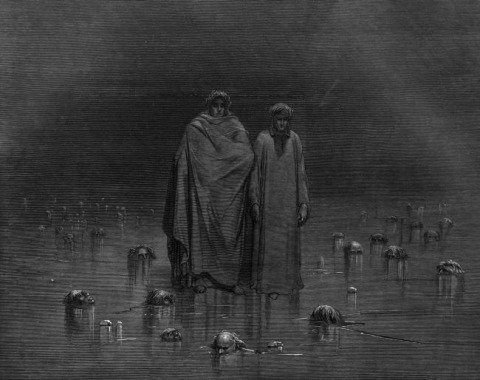
I blogged the other day about the idea of the fitting, or appropriate. One of the paradoxes of the fitting is that there is a place even for ugliness – not for its own sake, but to resensitize our jaded minds to the unfitting. The classical model for this is the gross style adopted by Dante Alighieri in his Inferno, so different from the styles of the other two canticles of the Comedy.
A good contemporary example of this paradox is a fine piece by Anthony Esolen, who writes “We live in an age of phantasmagorical masks, vandalizing the second most beautiful thing in physical existence, the body, and turning into the ego’s billboard the most beautiful thing in physical existence, the thing that the blind Milton longed most to see again -- the human face divine. In emphasis, it is as if the abdomen or the crotch or the bosom were what we thought made us most ourselves; as if we were walking and talking groins, with stunted little countenances hidden away below.”
Such ugly images are not to be too often conjured. Here, they work, for Esolen, who loves loveliness, knows when an arresting and finely calibrated crudity in words is the only thing that will serve to break through our hardened indifference to crudity in fact – when it is just enough to jolt us about what ought to jolt us, but doesn’t.
Then again, he is a Dante scholar.